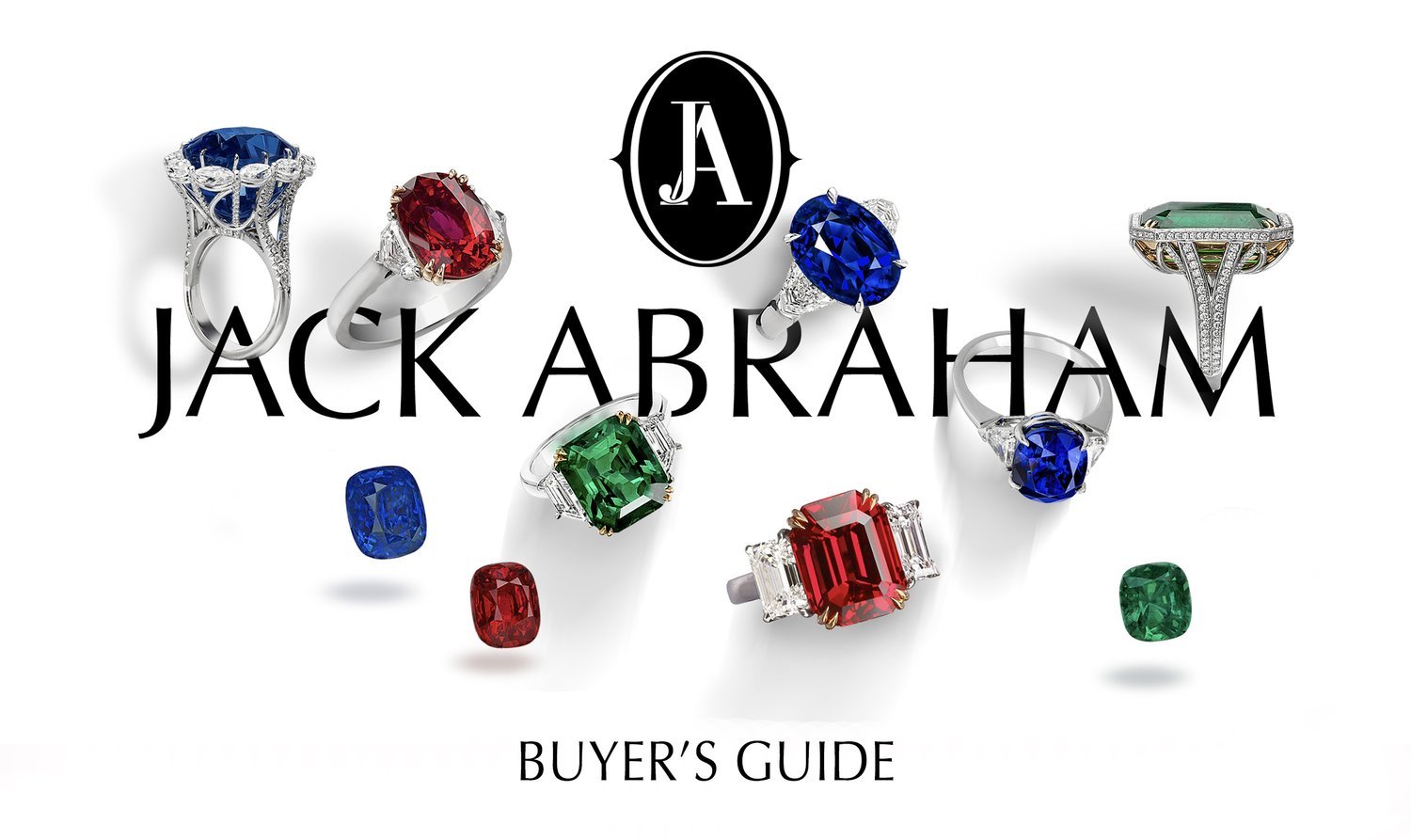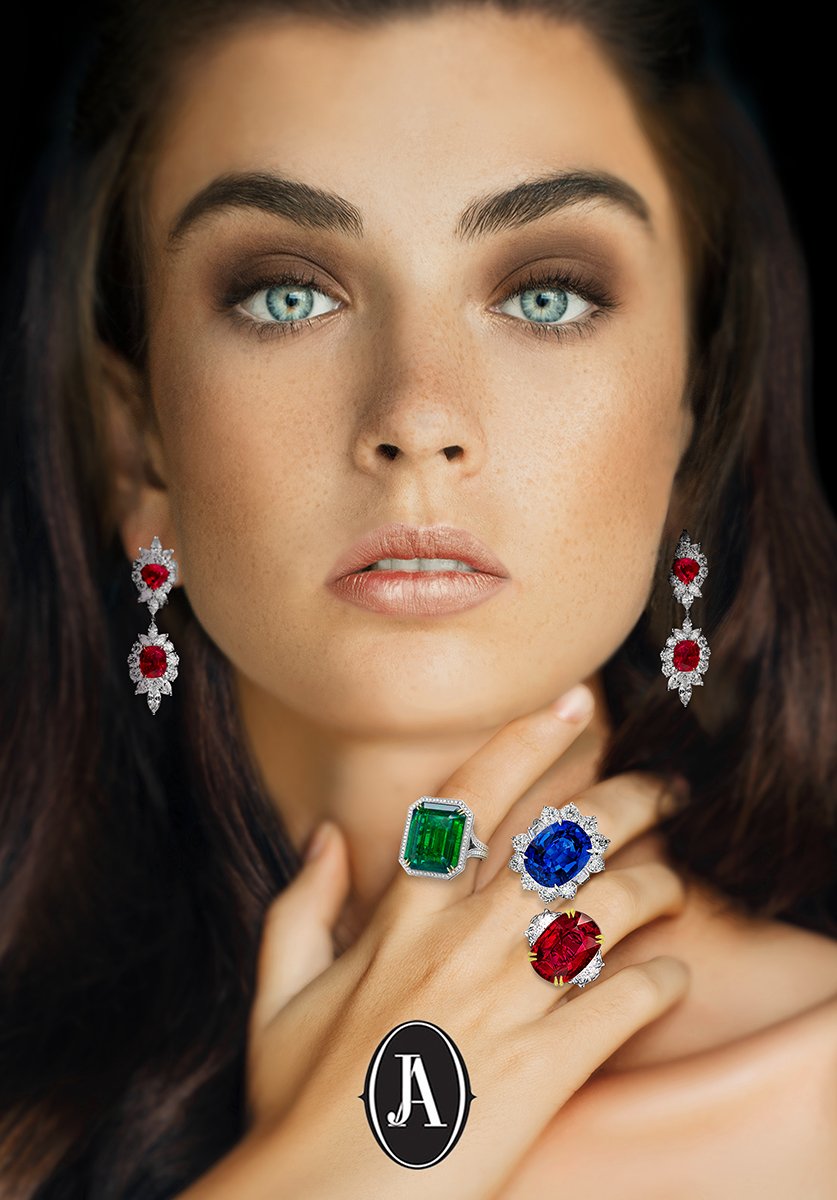
-
1. COLOR
Color is the most important factor in determining the quality and value of precious gems. Mother Nature does not provide us with 100% pure color in gems. Two gems of equal weight, cut and clarity might vary more than ten times the price as a result of a difference in color. In diamonds, excellence depends on the absence of color; but in rubies, sapphires and emeralds, it depends on its presence. The two dimensions of color are purity and the amount of color (or tone). Color is judged by the visible estimation of the purity of the primary color (i.e., red in ruby, blue in sapphire, green in emerald) and the secondary colors (i.e., orange, pink, purple in rubies; violet, purple, gray and green in sapphires; blue and yellow in emeralds). Negative modifiers of gray and brown are usually present in very small percentages.
-
2. TONE
Tone refers to the lightness, darkness or the amount of color exhibited by a gem. When a ruby, sapphire or emerald is too light or too dark, it can potentially affect both its desirability and value because it can affect the richness of a gemstone’s primary body color. Lighter gems may be beautiful and pleasing to the eye and in some cases, be desirable. They do not, however, enjoy the same appeal and price as the finest intense colors of ruby, sapphire, and emerald. For example, a pastel blue sapphire can be beautiful and pleasing to the eye but will never command the price of a sapphire with intense blue color. These variations in lightness or darkness are tonal references that can make a significant difference in the price of a gem.
-
3. CLARITY
Clarity describes a gem’s freedom from internal inclusions and surface blemishes. As internal features become more obvious to the eye, value continues to decrease. The type and number of inclusions can vary dramatically with the particular type of gem. Minor inclusions and surface characteristics may be commonly present even in the finest ruby, sapphires and emeralds. Sapphires are the cleanest, least included of the precious gems, followed by rubies and then by emeralds. Flawless colored gems, unlike diamonds, are almost nonexistent.
-
4. SIZE
Size generally refers to the actual weight of a gem measured in carats. Historically, the carat was connected to the weight of a “Carob Seed” which had a fairly consistent weight. As the standards and methods of weighing improved the carat was defined as 1/5th of a gram, so there are actually five carats to every gram. But there is more to “size” than just weight. For example, corundum, (rubies and sapphires), is denser than diamond. That means that a two carat sapphire or ruby cut in the identical shape and form as a 2 carat diamond will look visually smaller than the diamond.
-
5. COUNTRY OF ORIGIN
Country of origin has historically dominated demand and dictated market prices for ruby, sapphire and emerald. Burma, Kashmir and Colombia have emerged as the most important origins of choice in the gem marketplace. Even though there are good reasons why these locations have enjoyed elevated provenance in the gem world, origin determinations have become more complicated. As new deposits of gem material continue to be found, they represent an origin challenge to the consistency of many gem lab reports. As a result, international auction houses and many important dealers have resorted to using multiple Country of Origin Reports from several gem laboratories to protect themselves and gem buyers. Country of origin has vast impact on precious gem prices. A gem Burma Ruby with very similar visual characteristics of Rubies from other sources can fetch more than 10 times the price in the international market and a Kashmir Sapphire as much as 8 times more than stones from other sources.
-
6. CUT
Proportions and finish are the important factors in determining a “good cut”. The far Eastern cutters who cut most rubies and sapphires, traditionally try to retain as much weight as possible by cutting close to the shape of the “rough” or uncut gem. Symmetry and good proportions are secondary to weight retention and are deemed less important in colored stones than in diamonds. Proportion is how even and pleasing the overall cutting of the stone is, with depth and major symmetry taken into consideration. Finish is the quality of polish and symmetry of the gemstone.
-
7. SHAPE
In the world of ruby and sapphire, most gems will be cut into an “Oval” or a “Cushion” shape with a visually pleasing relationship between the length and width of the stone. The Cushion is basically a rectangular shape with rounded corners. With the right proportions it is an elegant shape and generally maximizes the potential beauty of the material. Emeralds are commonly cut in a rectangular faceting style which is a traditional look. Beyond these basic cutting styles, there are many options. Some are trendy and others are more traditional. Personal taste plays a role in the selection process.
-
8. BRILLIANCY
Brilliancy is the quality and quantity of the light returned to the eye. It is measured by the amount of light reflected to the eye when the gem is viewed from the table. Due to the physical characteristics of rubies, sapphires and emeralds and the methods of cutting, we rarely see gems with 100% brilliancy. Brilliancy isn’t necessarily equally distributed throughout the stone; we often see a gem that leaks light on one side and returns all the light on the other.
-
9. DICHROISM
Dichroism, as the name implies, refers to a “two color” effect that in some cases can be visible even to the untrained eye in any ruby, sapphire or emerald. Certain orientation directions in these gems provide a very pure color, but other cutting directions can produce a visually distracting two-color effect. Frequently, the rough gem and shape will dictate to the gem cutter how best to minimize the two-color effect. The less obvious the second color, the more attractive and desirable the gemstone.
-
10. COLOR ZONING
This is seen as uneven patches or bands of color with varying degrees of intensity. As a gem crystal is growing within the earth, change can occur in the complex chemistry of the growth process. These changes can result in color concentrations. Gem cutters will do their best to reduce the visual impact of these zones. Color zoning is much more common in sapphire and much less common in rubies and emeralds. Visibility of the color zoning in the normal viewing position of a gem can have an important impact on both desirability and price.
-
11. TEXTURE
Texture refers to minute, finely dispersed inclusions or their equivalent which interfere with the passage of light and gives the stone a dull, sleepy appearance. Gems with no texture or low texture are more desirable. In some cases, texture can produce a very pleasing effect. Part of the appeal of Kashmir sapphires is the faint microscopic texturing that produces the “velvety effect” and enhances the beauty and value of a classic Kashmir. However, if the effect becomes too pronounced it diminishes the appeal of a gem even in a Kashmir. Several inclusion patterns in a gem can be responsible for texture. The most important consideration is whether or not the “texture” adds or detracts from the visual appeal of the gem.
-
12. ENHANCEMENT
Over 90% of all colored precious gem stones are enhanced. Rubies and Sapphires are heated to remove impurities and improve their color. Heating finishes what Mother Nature left unfinished in the earth. For color to improve, the stone must have inherent qualities that heating brings out permanently. Emeralds are filled with oil or resin to fill fissures and improve their clarity.

